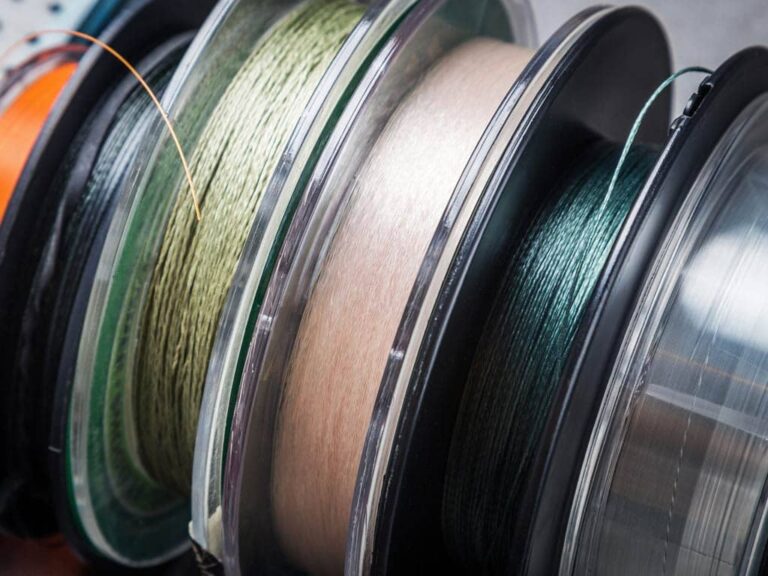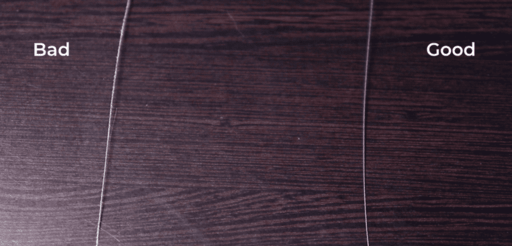Does Fishing Line Go Bad? Lifespan of Each Type of Fishing Line

If you’re like me, spending time by the water with a fishing rod in hand is pure bliss. But have you ever wondered if your trusty fishing line has an expiration date? I mean, can fishing line go bad?
Today, we’re diving deep into this fishy topic to uncover the truth about fishing line durability. Get ready to reel in some valuable insight.
Does Fishing Line Go Bad?
Yes, fishing line can go bad over time. Factors such as UV exposure, wear and tear from use, and temperature fluctuations can lead to a decrease in its strength and performance.
Proper storage and routine maintenance can help prolong its lifespan. Also, monofilament, braid, and fluorocarbon each have different lifespans.
What Happens When Fishing Line Goes Bad?
When fishing line goes bad, several undesirable consequences can occur during fishing expeditions. Here’s what happens:
- Reduced Strength: The fishing line loses its tensile strength, becoming more prone to breakage when battling larger or stronger fish.
- Increased Abrasion: Weakened fishing line is more susceptible to abrasion, resulting in nicks and fraying that further compromise its integrity.
- Decreased Sensitivity: The line’s sensitivity diminishes, making it difficult to detect subtle bites or movements, causing missed opportunities for successful catches.
- Knot Failure: Knots tied with degraded fishing line may become unreliable, leading to knot slippage and potential line failure.
- Casting Problems: As the line loses its suppleness, it may become more difficult to cast smoothly and accurately.
- Line Memory: The line may develop a “memory” and retain the shape of the spool, resulting in tangles and reduced casting distance.
- Reduced Durability: Weakened fishing line is less resistant to wear from underwater obstacles, increasing the risk of line breakage.
- Impact on Catch Rate: Ultimately, the degradation of fishing line can significantly impact an angler’s catch rate and overall fishing experience.
To avoid these issues, regular inspection, proper storage, and timely replacement of fishing line are essential for maintaining optimal performance and success on the water.
How Long Does Fishing Line Last?
Like I said before, each type of fishing line have slightly different lifespans until they start to deteriorate.
Monofilament
The typical lifespan of monofilament fishing line ranges from 6 months to 2 years. However, this can vary significantly based on the frequency of usage and the storage conditions.
Lines that are used frequently or subjected to harsh environmental factors like prolonged exposure to sunlight (UV rays) may deteriorate faster.
On the other hand, lines stored properly in a cool, dry place away from direct sunlight tend to last longer and maintain their strength and integrity.
Braided Fishing Line
The typical lifespan of braided fishing line can vary between 1 to 3 years, depending on the usage frequency and storage conditions.
Braided lines are generally more durable than monofilament lines and can withstand rough conditions better.
However, their lifespan may be shortened with frequent use, especially when fishing in abrasive environments or targeting large, powerful fish that put considerable strain on the line.
If you need new braid, check out the cheapest braided fishing line.
Flurocarbon
The typical lifespan of fluorocarbon fishing line is generally around 2 to 4 years. Fluorocarbon lines are known for their excellent durability and resistance to UV rays and abrasion, allowing them to last longer than some other types of fishing lines.
Co-Polymer fishing line is about the same as fluoro and mono.
How to Know if my Fishing Line is Still Good

To determine if your fishing line is still in good condition, follow these steps:
- Visual Inspection: Examine the fishing line carefully for any visible signs of wear, fraying, or discoloration. Look for nicks, abrasions, or flat spots along the line’s surface.
- Feel the Line: Run your fingers along the length of the line. If you notice any rough or uneven texture, it could indicate damage or weakening of the line.
- Check Knots: Inspect the knots you’ve tied on the line. If they appear loose, slipped, or show signs of wear, it may be an indication that the line needs replacement.
- Conduct the “Pull Test”: Using gloves for safety, gently pull the line between your fingers. If you feel any weak spots or notice the line easily stretching or breaking, it’s time to replace it.
- Check Memory: Unspool a significant portion of the line and observe its behavior. If it retains excessive memory or forms coils, it might be time for a fresh line.
- Consider Age and Usage: Evaluate how long you’ve been using the line and how frequently you fish. Older lines or ones that have seen heavy use might need replacement even if they appear visually intact.
- Review Past Performance: Reflect on recent fishing experiences. If you’ve experienced more line breakages or lost fish, it could be an indication that the line’s performance has declined.
If your fishing line exhibits any of these signs of wear or damage, it’s best to err on the side of caution and replace it before heading out for your next fishing adventure.
A fresh, reliable line will increase your chances of success and ensure an enjoyable fishing experience.
Fishing Line Maintenance to Increase its Lifespan
Proper line maintenance is essential to increase the lifespan of your fishing line and maintain its peak performance. Follow these tips to keep your line in top shape:
- Regular Inspection: Inspect your fishing line before and after each fishing trip. Look for signs of wear, fraying, or damage along the line’s length and at knots.
- Clean After Use: After fishing, rinse your line thoroughly with freshwater to remove any salt, sand, or debris. This prevents potential damage caused by abrasive particles.
- Dry Thoroughly: Allow the line to dry completely before storing it. Moisture can lead to mold or mildew, which weakens the line over time.
- Store Properly: Store your fishing line in a cool, dry place, away from direct sunlight and extreme temperatures. Use a line spooler or a line conditioner to avoid unnecessary twisting and coiling.
- Rotate the Line: If you’re using a spool with a lot of line, occasionally flip the line on the spool to prevent it from settling in one position and developing memory coils.
- Replace Worn Leaders: If you’re using a leader with your mainline, check it regularly for any damage or weakening. Replace it when necessary to ensure seamless connections.
- Avoid Knot Overlap: When respooling or retying knots, avoid overlapping the same section of the line multiple times. This reduces the risk of creating weak points.
- Lubricate Knots: Apply a small amount of saliva or water-based lubricant to knots before tightening them. This helps prevent friction and ensures secure knots.
- Use Line Conditioner: Consider using a line conditioner spray to keep the line supple and reduce friction during casting.
- Limit Exposure to UV Rays: Avoid leaving your fishing gear in direct sunlight for extended periods as UV rays can weaken the line over time.
By following these maintenance practices, you can significantly extend the lifespan of your fishing line, enhance its durability, and enjoy more successful and trouble-free fishing experiences.
Remember that regular inspection and timely replacement when necessary are crucial to maintaining a reliable fishing line.
Tying this Off
Remember, fishing line does go bad over time, but with proper care and maintenance, you can make it last much longer and perform at its best.
By regularly inspecting your line, cleaning it after each fishing trip, and storing it properly, you’ll be well on your way to keeping your fishing line in top-notch condition.
Don’t forget to be mindful of UV exposure and extreme temperatures, as they can take a toll on your line’s strength and performance.
With these tips and tricks up your sleeve, you can confidently cast your line, knowing it’s in great shape to handle whatever the water throws at it.
So, whether you’re a seasoned angler or just starting your fishing journey, give your fishing line the care it deserves, and it’ll reward you with memorable catches for many fishing seasons to come!
Now, it’s time to gear up, hit the water, and create unforgettable fishing memories. Tight lines and happy fishing!






